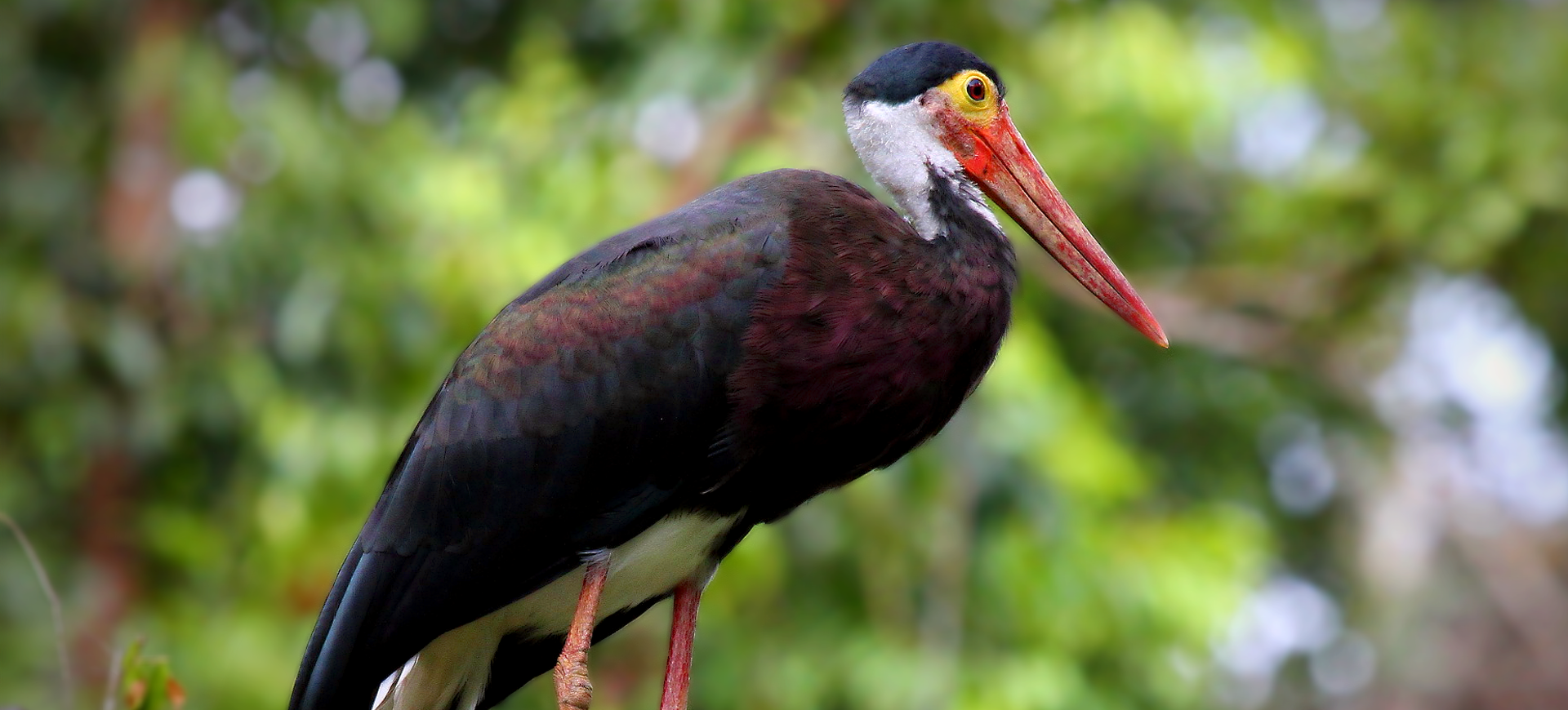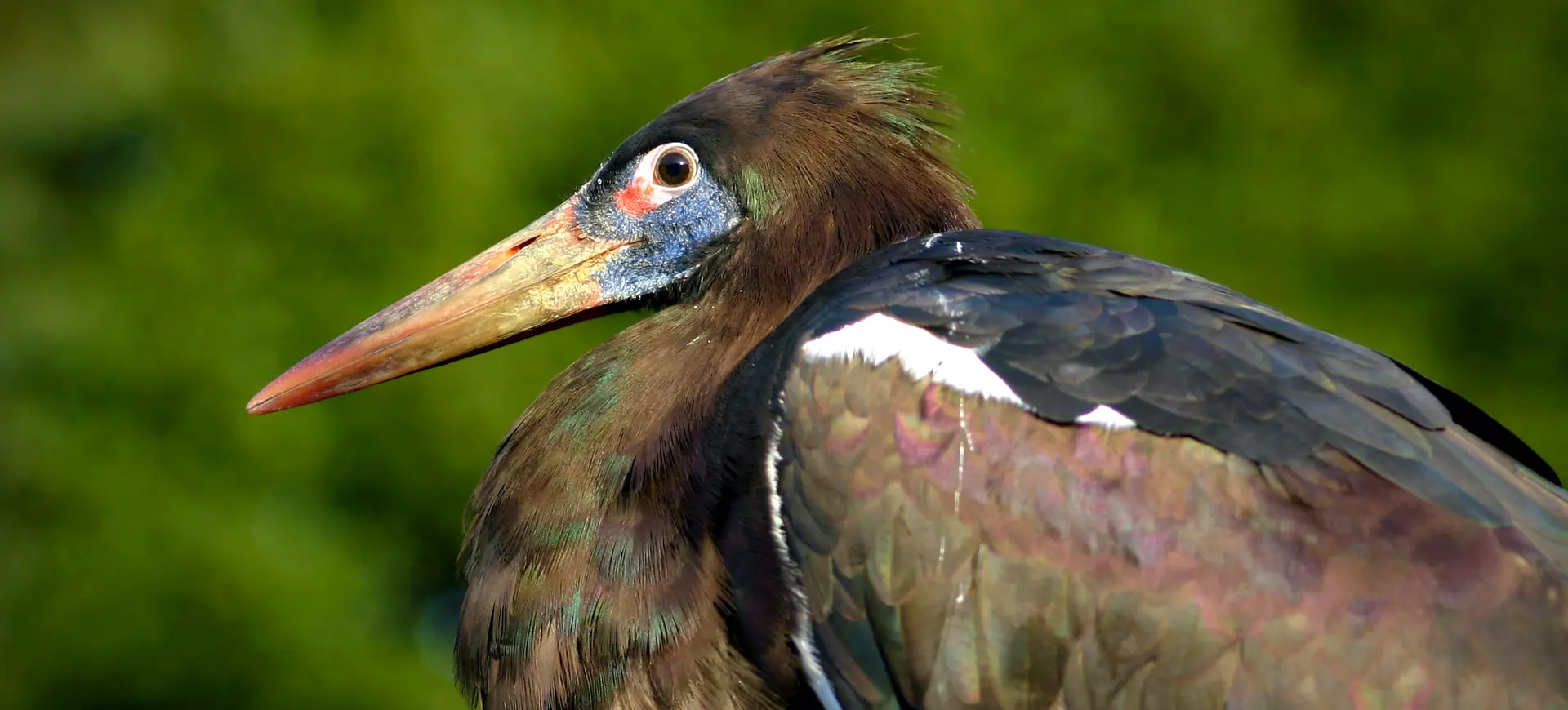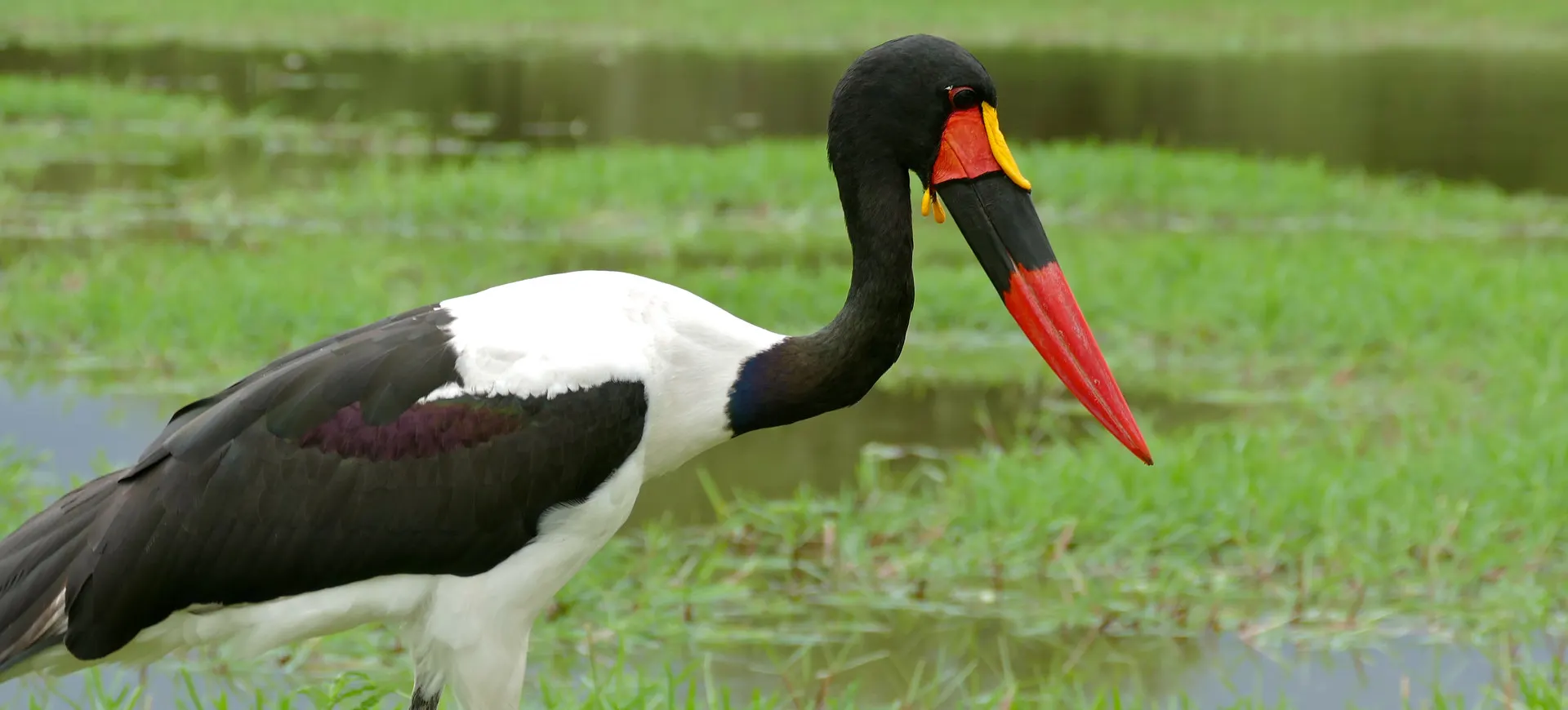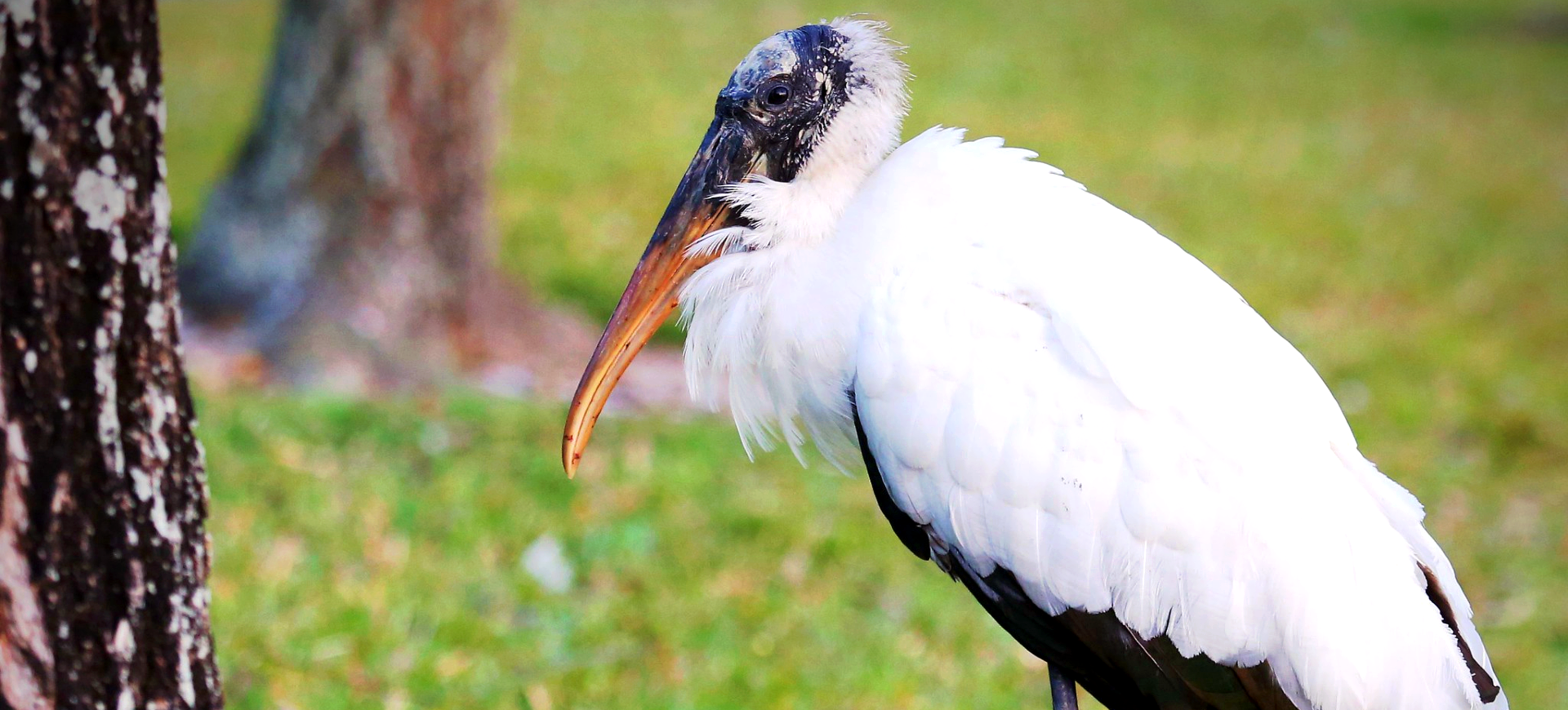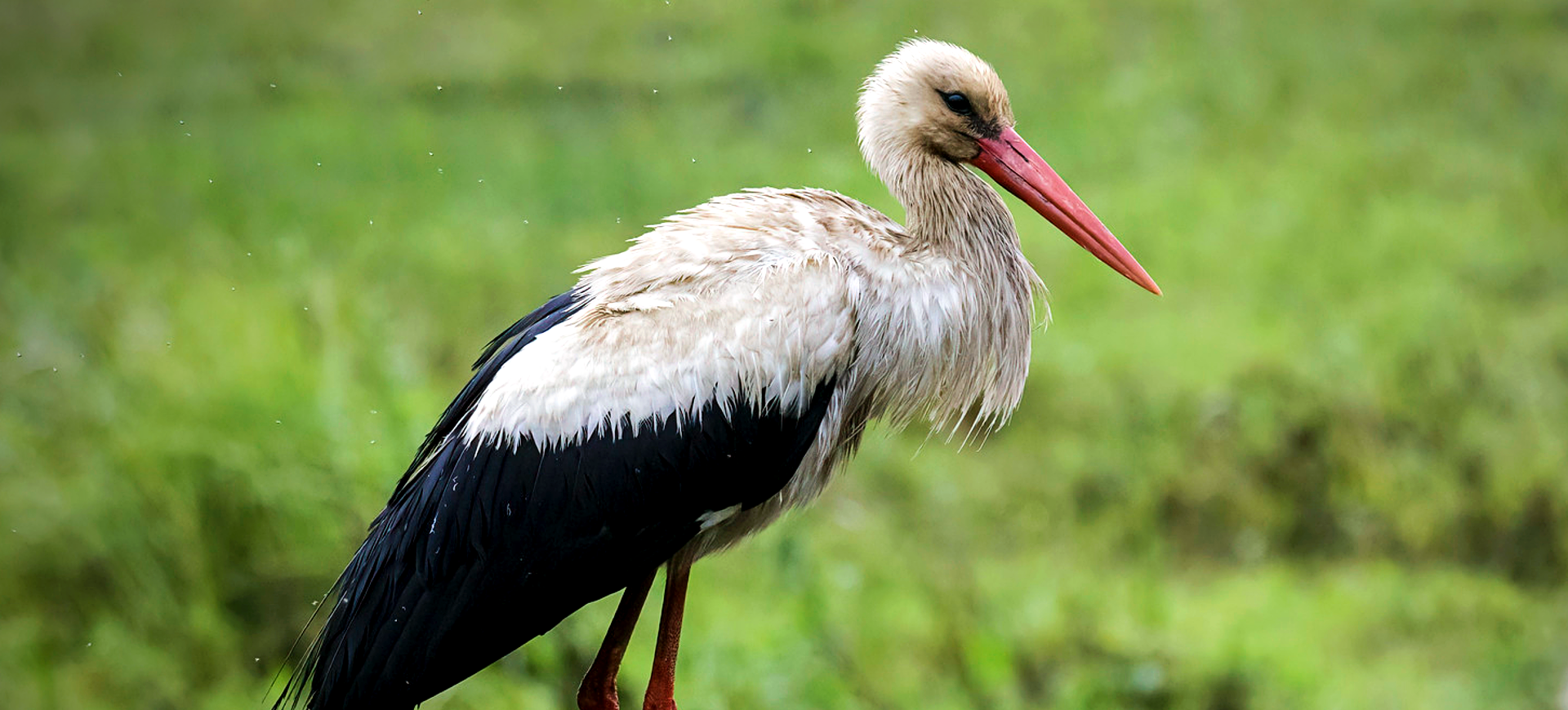Overview
The Marabou Stork is a large wading bird native to sub-Saharan Africa. It is easily recognizable by its bald head, long legs, and massive bill. The species is often found near water bodies but is highly adaptable and can thrive in a variety of environments, including both natural and human-made habitats like garbage dumps and fishing villages.
Adult Marabou Storks have a predominantly black and white coloration, with dark wings and back, while the underparts are white. The head and neck are nearly featherless, revealing pink to reddish skin. This lack of feathers is an adaptation to their scavenging lifestyle, as it helps to keep them clean when feeding on carrion.
Marabou Storks are known for their scavenging habits but are opportunistic feeders that will consume a wide range of food items. They are often seen in the company of other scavengers like vultures. Despite their ungainly appearance, Marabou Storks are capable fliers who can cover large distances for food.
Taxonomy
Kingdom
Phylum
Class
Order
Family
Genus
Species
Type
Physical Description:
The Marabou Stork is a large bird with a height of up to 60 inches and a wingspan exceeding 10 feet. The bird’s massive bill is adapted for scavenging, allowing it to easily tear into carcasses. The legs are long and powerful, aiding in wading through shallow water bodies when searching for food.
The nearly bald head and neck are adaptations that help the Marabou Stork stay clean while feeding on carrion. The skin on the head can range from white to pink and even to dark red, often depending on the bird’s mood. The eyes are dark, starkly contrasting to the mostly bare face.

Lifespan: Wild: ~25 years || Captivity: ~35 years

Weight: Male: 14–20 lbs (6.4–9.1 kg) || Female: 12–17 lbs (5.4–7.7 kg)

Length: Male: 45–58 in (115–147 cm) || Female: 42–52 in (107–132 cm)

Height: Male: 48–60 in (122–152 cm) || Female: 46–55 in (117–140 cm)

Wingspan: Male & Female: 8.2–10.5 ft (250–320 cm)

Top Speed: 20 mph (32 km/h)
Characteristic:
Native Habitat:
Marabou Storks are native to sub-Saharan Africa and are highly adaptable birds that thrive in various habitats. They are commonly found near rivers, lakes, and wetlands, where they can easily access food. They also inhabit savannas and grasslands, particularly during the dry season when water bodies may shrink.
The species is highly tolerant of human presence and is often found near human settlements. They are commonly seen in fishing villages near garbage dumps, where they scavenge for food. This adaptability has allowed them to thrive in a range of environmental conditions.
Climate Zones:
Biomes:
Biogeographical Realms:
Continents:
Countries:
Diet:
Diet & Feeding Habits:
Marabou Storks are primarily scavengers, often seen feeding on carcasses alongside vultures and hyenas. They have a strong, hooked bill that allows them to tear into tough flesh and access internal organs. They are opportunistic feeders and consume fish, frogs, and small mammals when available.
Despite their preference for carrion, Marabou Storks are also known to hunt live prey, particularly in aquatic environments. They are skilled fishers and will wade through shallow waters to catch fish. They are also known to consume human waste and are often seen scavenging in garbage dumps.
Mating Behavior:
Mating Description:
Marabou Storks are colonial nesters, often building their nests in trees alongside other storks and herons. The male usually initiates the courtship by performing a variety of displays, including bill-clattering and spreading his wings. Once a pair is formed, they build a large nest made of sticks lined with softer materials like leaves and grass.
The female typically lays two to three eggs, which both parents incubate. The eggs hatch after about 30 days, and the chicks are cared for by both parents. The young are fed regurgitated food and fledge after about three months. After fleeing, they continue relying on their parents for food and protection for several weeks.
Reproduction Season:
Birth Type:
Pregnancy Duration:
Female Name:
Male Name:
Baby Name:
Social Structure Description:
Marabou Storks are generally solitary when foraging but can be found in loose aggregations, especially near abundant food sources. These gatherings are not highly structured but can sometimes involve dozens of individuals. During the breeding season, they form colonies, often sharing nesting sites with other species of storks and herons.
Social interactions among Marabou Storks are limited but can include bill-clattering and other vocalizations, primarily during the breeding season. Aggressive interactions are rare, and the birds generally maintain social tolerance, particularly when feeding. This social structure allows them to exploit food resources efficiently and maintain their wide distribution.
Groups:
Conservation Status:
Population Trend:
Marabou Storks are widely distributed across sub-Saharan Africa and are considered to be of “Least Concern” according to the IUCN Red List. They are particularly abundant in East Africa, often seen in large colonies. Their adaptability to various habitats, including human-altered environments, has contributed to their relatively stable population status.
Despite their wide distribution and stable populations, Marabou Storks face some threats, primarily habitat loss due to agricultural expansion and human settlement. However, their adaptability and opportunistic feeding habits have allowed them to thrive in various conditions, making them less vulnerable to environmental changes than other species.
Population Threats:
Marabou Storks face threats primarily from habitat loss and degradation, particularly in regions where wetlands are being drained for agriculture. They are also at risk from pollution, especially in water bodies where they feed. In some areas, they are hunted for their feathers and beaks, used in traditional medicine and crafts.
Human-wildlife conflict is another issue, particularly in regions where they are abundant. Their scavenging habits sometimes bring them into conflict with human activities, especially in urban areas where they are considered a nuisance. Despite these threats, their adaptability and wide distribution have helped them maintain relatively stable populations.
Conservation Efforts:
Conservation efforts for Marabou Storks primarily focus on habitat preservation and education. Wetlands and other key habitats are being protected in some regions to ensure these birds have suitable breeding and feeding grounds. Community-based conservation programs also exist, which aim to educate the public about the ecological importance of this species.
In some areas, Marabou Storks are part of larger conservation initiatives that protect wetlands and other critical habitats. These initiatives often involve multiple stakeholders, including government agencies, non-governmental organizations, and local communities. Through these efforts, the species thrives in many parts of its range.
Additional Resources:
Fun Facts
- Marabou Storks have one of the largest wingspans among living birds.
- They follow migrating herds of ungulates to feed on the afterbirth and other waste.
- Marabou Storks have a pouch in their throat known as a gular sac, which they can inflate to regulate body temperature.
- They are often seen in the company of vultures and are known to dominate carcasses due to their large size.
- Marabou Storks consume almost anything, including other birds, small mammals, and human waste.
- They are one of the few stork species that are primarily scavengers.
- Marabou Storks can soar at high altitudes, often using thermals to gain height.
- They have a unique “urinating” behavior, defecating on their legs to cool down through evaporative cooling.
- Marabou Storks are known to form mixed-species colonies with other birds like herons and egrets.
- Despite their menacing appearance, Marabou Storks are generally shy and will avoid human contact whenever possible.









